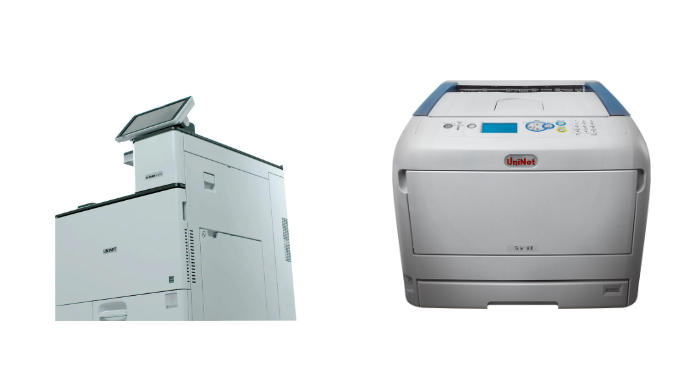Common Printing Press Machine Issues and How to Fix Them

Printing press machines are the backbone of commercial printing, packaging, and publishing industries. Whether you operate an offset press, flexographic press, or digital press, even minor issues can cause costly downtime, reduced print quality, and production delays. Understanding common problems — and knowing how to address them — is essential for smooth operations and long-term machine health.
In this article, we’ll explore the most frequent printing press machine issues, why they occur, and practical solutions to fix them.
1. Ink Smudging or Set-Off
The Problem:
Ink smudging happens when freshly printed sheets stick together, causing the ink to transfer from one sheet to another. This can lead to messy prints and waste.
Possible Causes:
-
Ink is too wet or slow-drying
-
Excessive ink application
-
Poor-quality paper stock
-
Incorrect press settings
How to Fix It:
-
Use quick-drying ink or add drying agents.
-
Reduce ink coverage where possible.
-
Ensure the press has adequate drying mechanisms, such as infrared or UV curing systems.
-
Adjust ink-water balance for offset printing to speed up drying.
Prevention Tip: Always test new paper and ink combinations before running large batches.
2. Misregistration (Color Misalignment)
The Problem:
Misregistration occurs when different color layers do not align perfectly, resulting in blurred or “shadowed” images.
Possible Causes:
-
Loose printing plates or cylinders
-
Improper paper feeding
-
Incorrect tension settings
-
Worn-out register mechanisms
How to Fix It:
-
Check and tighten all plate clamps.
-
Adjust paper guides and ensure consistent sheet feeding.
-
Reset and calibrate the machine’s registration controls.
-
Replace worn-out parts that affect paper stability.
Prevention Tip: Regularly calibrate registration systems, especially when switching between jobs.
3. Paper Jams
The Problem:
Paper jams can halt production and damage both the media and the press components.
Possible Causes:
-
Incorrect paper size or weight
-
Damaged or curled paper
-
Dirty or worn rollers
-
Improper feeding speed
How to Fix It:
-
Remove jammed paper carefully to avoid tearing it inside the machine.
-
Use paper that matches the machine’s specifications.
-
Clean and maintain rollers to ensure smooth feeding.
-
Adjust feed speed according to the paper type.
Prevention Tip: Store paper in a dry, climate-controlled environment to prevent warping and curling.
4. Uneven Ink Coverage
The Problem:
Uneven ink coverage leads to patchy prints where some areas are lighter or darker than others.
Possible Causes:
-
Dirty or damaged printing plates
-
Improper inking roller settings
-
Ink starvation due to clogged ink ducts
-
Poor-quality ink
How to Fix It:
-
Clean plates and rollers thoroughly before each run.
-
Adjust roller pressure to ensure consistent ink transfer.
-
Check ink fountains for clogs and refill ink as needed.
-
Use high-quality ink recommended for your machine.
Prevention Tip: Implement a cleaning schedule for inking systems to prevent buildup.
5. Ghosting
The Problem:
Ghosting appears as faint, unwanted images on the printed sheet, often caused by uneven ink distribution.
Possible Causes:
-
Ink starvation in certain areas of the plate
-
Poor ink-water balance
-
Mechanical vibration during printing
How to Fix It:
-
Adjust the ink distribution system to supply enough ink across the plate.
-
Rebalance dampening settings to avoid excessive water.
-
Inspect press components for mechanical issues that cause vibrations.
Prevention Tip: Run regular maintenance checks to ensure smooth mechanical operation.
6. Wrinkling or Creasing of Paper
The Problem:
Wrinkled or creased paper can ruin the final product and may damage press rollers.
Possible Causes:
-
Incorrect web tension (in web presses)
-
Misaligned rollers
-
Damp or warped paper
-
Excessive pressure settings
How to Fix It:
-
Adjust web tension to avoid slack or overstretching.
-
Realign rollers to maintain even pressure.
-
Store paper properly to prevent moisture absorption.
-
Reduce nip pressure if necessary.
Prevention Tip: Use paper that is properly conditioned before printing.
7. Poor Image Sharpness
The Problem:
Blurry prints or loss of detail reduce overall print quality.
Possible Causes:
-
Worn-out printing plates or blankets
-
Excessive ink-water balance (in offset presses)
-
Incorrect pressure between plate and substrate
How to Fix It:
-
Replace worn printing plates and blankets.
-
Adjust dampening system to maintain optimal balance.
-
Fine-tune impression cylinder pressure for better contact.
Prevention Tip: Inspect consumables regularly and replace them before they cause quality issues.
8. Machine Overheating
The Problem:
Overheating can cause ink to dry prematurely in the press or damage sensitive components.
Possible Causes:
-
Insufficient ventilation
-
Excessive machine load
-
Faulty cooling fans or systems
How to Fix It:
-
Ensure proper airflow around the press.
-
Avoid running the machine beyond its recommended capacity.
-
Repair or replace faulty cooling systems.
Prevention Tip: Schedule downtime for cooling during long production runs.
9. Excessive Noise or Vibration
The Problem:
Unusual noise or vibration can indicate mechanical wear or misalignment.
Possible Causes:
-
Loose components
-
Worn bearings or gears
-
Unbalanced rollers
How to Fix It:
-
Inspect and tighten all bolts and fasteners.
-
Replace worn bearings and gears.
-
Balance rollers to prevent uneven wear.
Prevention Tip: Keep up with preventive maintenance to catch issues early.
Final Thoughts
Keeping a printing press machine in peak condition requires regular maintenance, quality materials, and attentive operation. Many common printing issues — from ink smudging to misregistration — can be resolved with proper adjustments and cleaning.
By addressing problems quickly and implementing preventive maintenance routines, you can avoid costly downtime, improve print quality, and extend the life of your equipment.
In today’s competitive printing industry, consistent performance and reliability aren’t just nice to have — they’re essential for meeting deadlines, maintaining customer satisfaction, and protecting your bottom line.
- Marketing & Social Media
- AI & Digital Tools
- Science & Innovation
- Business & Finance
- Education & Learning
- Technology & Gadgets
- Family & Relationships
- Parenting & Kids
- Fashion & Beauty
- Travel & Culture
- News & Politics
- Home
- Literature
- Music
- Networking
- Alte
- Party
- Religion
- Shopping
- Sports
- Theater
- Wellness
- Art
- Causes
- Crafts
- Dance
- Drinks
- Film
- Fitness
- Food
- Gardening
- Health
- Jocuri



